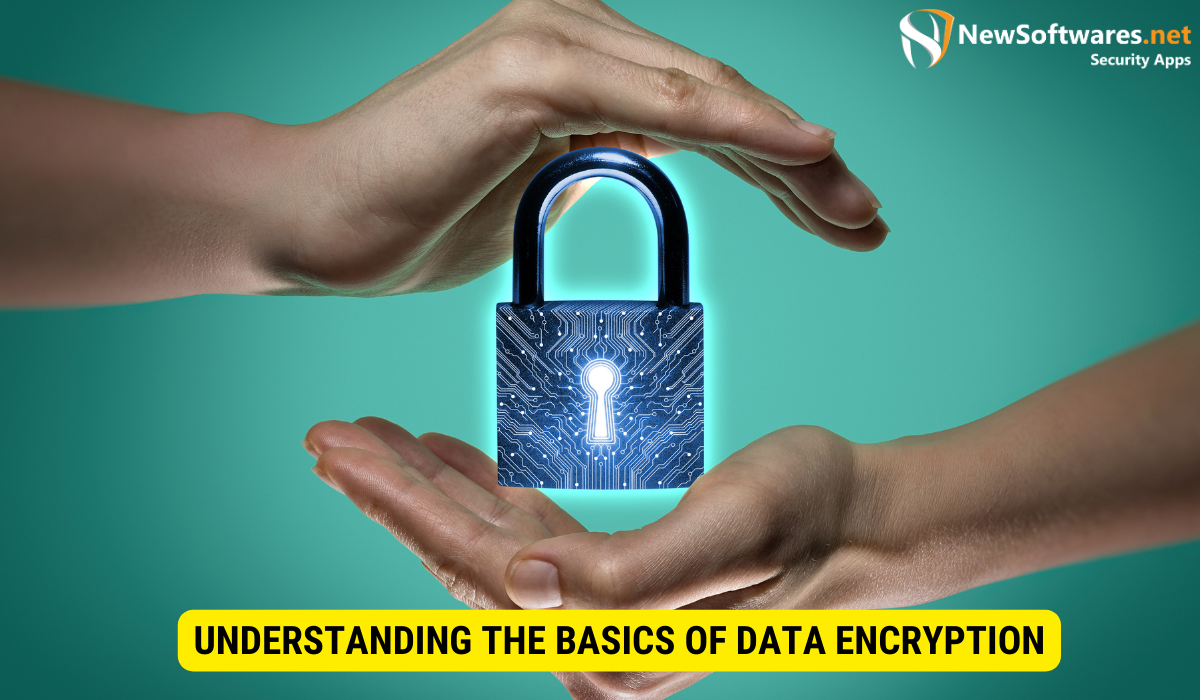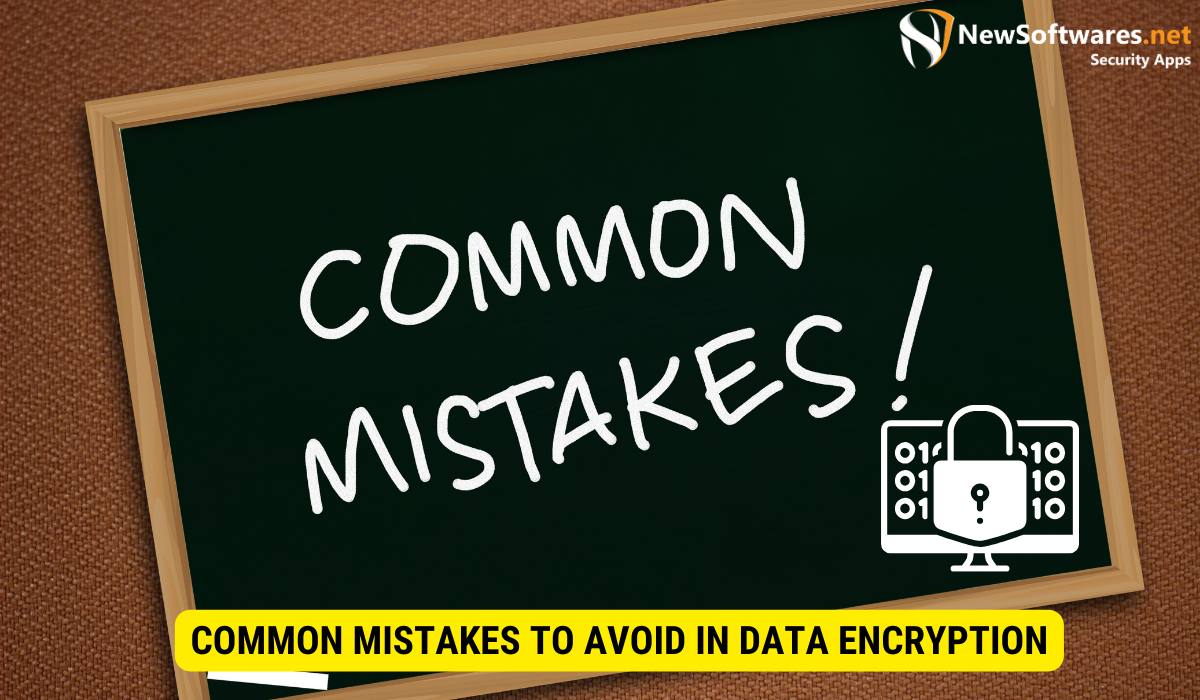To encrypt data with your key, follow these steps:
- Choose the Right Encryption Algorithm: Select a suitable encryption algorithm like the Advanced Encryption Standard (AES) based on your security requirements.
- Generate a Strong Key: Create a strong and random encryption key, avoiding easily guessable or personal information. Use random number generators for this purpose.
- Encrypt Your Data: Use encryption software, programming libraries, or tools to encrypt your data with your key. This process transforms plain text data into cipher text, making it unreadable without the correct key.
- Manage Your Encryption Key: Safeguard your encryption key from unauthorized access by storing it in a secure location. Regularly back up your key to prevent data loss in case of key loss or corruption.
- Key Renewal and Rotation: Enhance security by periodically renewing or rotating your encryption key. This practice reduces the risk of a compromised key being used to decrypt sensitive data.
Remember to avoid common mistakes such as weak key generation and mismanagement of keys to ensure the effectiveness of data encryption with your key.
Data security is of highest importance in today’s digital period. With the increasing number of data breaches and cyber-attacks, it has become crucial for individuals and organizations to protect their sensitive information. One effective way to secure data is through encryption. While there are various encryption methods available, using your encryption key adds an extra layer of security. Together, we will explore the basics of data encryption, the importance of using your key, the steps to create your encryption key, the process of encrypting data, managing your encryption key, and common mistakes to avoid. By the end, we will have a comprehensive understanding of how to encrypt data with your key and ensure the safety of your information.
Understanding the Basics of Data Encryption

Data encryption is the procedure of transforming plain text data into cipher text, making it unreadable to unauthorized users. The primary objective of encryption is to shield sensitive info from being accessed or intercepted by hackers. Encryption uses algorithms and keys to transform data, and only those with the corresponding key can decrypt and access the original information.
Data encryption involves the use of mathematical algorithms to convert plain text into cipher text. The cipher text can only be deciphered by using the correct key. This ensures that even if the data is intercepted, it remains secure as long as the key is kept secret. Encryption is widely used in a variety of applications, including secure communications, online banking, and data storage.
One of the most commonly used encryption algorithms is the Advanced Encryption Standard (AES). AES is a symmetric encryption algorithm, this uses similar key is used for both encryption and decryption. It is widely regarded as secure and is used by governments and organizations worldwide to protect sensitive information.
Importance of Using Your Key in Data Encryption
When encrypting data, it is crucial to use your encryption key rather than relying on a third-party key. Using your key allows you to have complete control over the encryption process and makes sure that only official individuals can access the encrypted data. Additionally, using a unique key specific to your organization provides an added layer of protection against unauthorized access.
There are two types of encryption. Symmetric encryption keys are the same for both encryption and decryption, while asymmetric encryption keys come in pairs: a public key & a private key. The unrestricted key is used for encryption, while the private key is used for decryption. Asymmetric encryption is often used in scenarios where secure communication between two parties is required, such as in secure email exchanges or online transactions.
Another important aspect of data encryption is key management. Proper key management involves securely storing and distributing encryption keys to authorized individuals. Key rotation, which involves periodically changing encryption keys, is also a recommended practice to enhance security. Additionally, organizations often implement key escrow systems, where a trusted third party holds a copy of the encryption keys in case they are lost or compromised.
It is worth noting that while data encryption provides a strong layer of security, it is not foolproof. Encryption algorithms can be vulnerable to attacks, and the security of the encrypted data relies heavily on the strength of the encryption key. Therefore, it is essential to use strong, unique keys and regularly update them to mitigate the risk of unauthorized access.
In conclusion, data encryption is a crucial aspect of modern cybersecurity. It helps defend sensitive information from unauthorized access and ensures the confidentiality and integrity of data. By understanding the basics of data encryption and implementing proper key management practices, organizations can improve their overall security posture and defend their valuable data.
Steps to Create Your Encryption Key
Creating your encryption key involves several important steps:
Choosing the Right Encryption Algorithm
Before creating your encryption key, it is essential to select an appropriate encryption algorithm. There are several encryption algorithms available, each with its strengths and weaknesses. It is recommended that you choose a widely recognized and trusted algorithm that meets your security requirements.
One popular encryption algorithm is the Advanced Encryption Standard (AES). AES is widely used and considered secure for a wide range of applications. It provides strong encryption and has been adopted by governments and organizations around the world.
Another commonly used encryption algorithm is the Rivest Cipher (RC). RC is a family of symmetric key ciphers that includes RC4, RC5, and RC6. These ciphers are known for their simplicity and efficiency, making them suitable for resource-constrained devices.
When choosing an encryption algorithm, it is important to consider factors such as the level of safety required, the speed of encryption and decryption, and the compatibility with existing systems.
Generating a Strong Key
To create a strong encryption key, you need to ensure that it is long, complex, and random. Avoid using easily guessable or personal information as your key. Instead, consider using a random blend of letters, numbers, and symbols.
One way to generate a strong encryption key is to use a random number generator. This can be done using software libraries or hardware devices specifically designed for generating random numbers. These generators use complex algorithms to produce truly random numbers that are difficult to predict.
It is also recommended to periodically change your encryption key to enhance security. Regularly updating your key makes it harder for attackers to decrypt your data, even if they manage to obtain the old key.
Additionally, consider using key management systems to store and distribute your encryption keys securely. These systems provide a centralized and controlled approach to key management, ensuring that keys are properly protected and accessed only by authorized individuals.
Encrypting Data with Your Key
Once you have created your encryption key, you can start encrypting your data:
Process of Data Encryption
The process of data encryption involves using your encryption key to convert the plain text data into cipher text. This can be done using encryption software or programming libraries. The encrypted data can then be securely stored or transmitted across insecure networks.
Tools for Encrypting Data
There are various tools available that can help you encrypt your data using your key. Some popular options include open-source encryption software, commercial encryption programs, and programming libraries. Explore and choose a tool that best suits your needs and security requirements.
Managing Your Encryption Key
Effective management of your encryption key is crucial for maintaining data security:
Safeguarding Your Key
It is essential to protect your encryption key from unauthorized access. Store the key in a secure location, such as a hardware security module or a trusted key management system. Regularly backup your key to ensure that you can recover encrypted data in case of key loss or corruption.
Key Renewal and Rotation
To enhance security, consider regularly renewing or rotating your encryption key. This practice reduces the risk of a compromised key being used to decrypt sensitive data. Rotate your key at regular intervals and ensure that the new key is securely distributed to authorized individuals.
Common Mistakes to Avoid in Data Encryption

While encrypting data with your key provides a high level of security, certain mistakes can undermine its effectiveness:
Weak Key Generation
Generating a weak encryption key increases the risk of unauthorized access. Avoid using easily guessable or weak keys. Follow the recommended guidelines to create strong and random encryption keys.
Mismanagement of Keys
Poor key management practices can compromise the security of encrypted data. Ensure that your encryption keys are adequately protected, regularly rotated, and only accessible to authorized individuals. Implement secure key management processes to minimize the risk of key-related incidents.
Key Takeaways
- Data encryption converts plain text into cipher text for enhanced security.
- Using your encryption key adds an extra layer of protection.
- Choosing the right encryption algorithm is crucial.
- Create a strong and random encryption key.
- Effectively manage your encryption key to maintain data security.
FAQs
Q: Can I use the same encryption key for multiple purposes?
A: It is not recommended to use the same encryption key for different purposes. Using a unique key for each application or set of data ensures that if one key is compromised, the other data remains secure.
Q: Can I recover encrypted data without the encryption key?
A: No, encrypted data cannot be recovered without the correct encryption key. It is crucial to keep the encryption key secure and accessible to authorized individuals.
Q: How often should I rotate my encryption key?
A: The frequency of key rotation depends on your organization’s security policies and the sensitivity of the data being encrypted. It is recommended to rotate the key periodically to minimize the risk of compromise.
Q: What happens if I lose my encryption key?
A: Losing the encryption key can result in permanent data loss. It is crucial to have proper key backup and recovery mechanisms in place to prevent such incidents.
Q: Can encryption protect data from all types of cyber-attacks?
A: While encryption provides a high level of protection, it is not foolproof against all types of cyber-attacks. It is essential to implement a comprehensive security strategy that includes encryption along with other security measures.
Conclusion
Encrypting data with your key is a powerful way to protect sensitive information from unauthorized access. By understanding the basics of data encryption, creating a strong encryption key, and effectively managing your key, you can safeguard your data from cyber threats. Remember to avoid common mistakes in data encryption, such as weak key generation and mismanagement of keys. Implementing robust encryption practices will enhance the security of your data and provide peace of mind.
